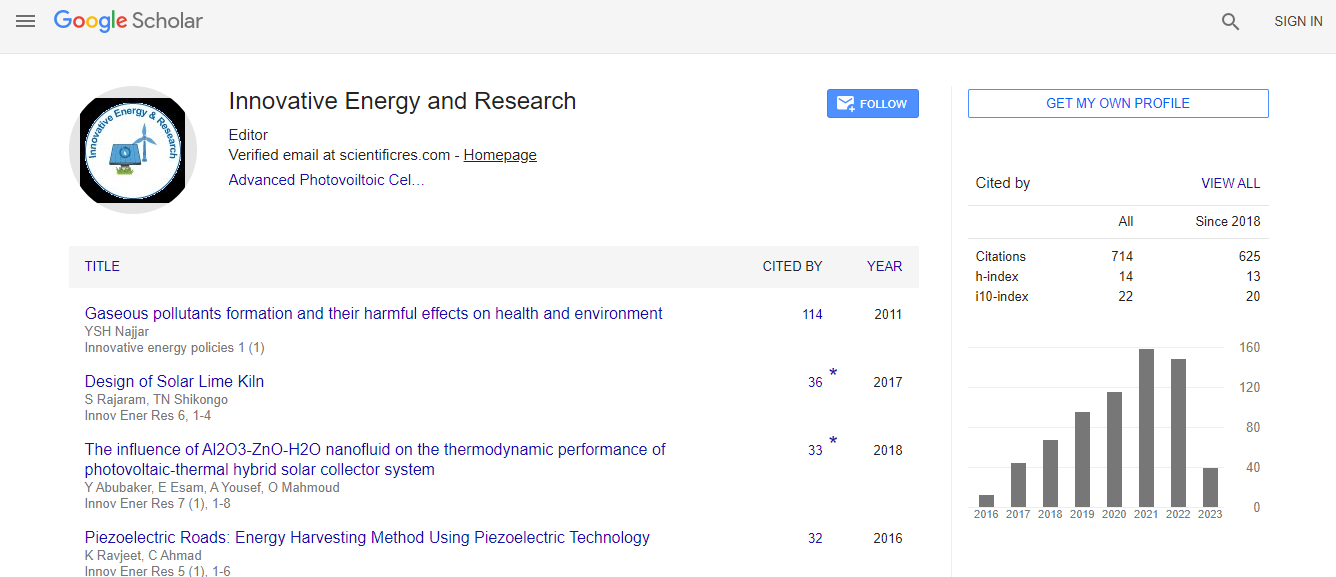Our Group organises 3000+ Global Events every year across USA, Europe & Asia with support from 1000 more scientific Societies and Publishes 700+ ������ Journals which contains over 50000 eminent personalities, reputed scientists as editorial board members.
������ Journals gaining more Readers and Citations
700 Journals and 15,000,000 Readers Each Journal is getting 25,000+ Readers
Citations : 712
Indexed In
- Google Scholar
- Open J Gate
- Genamics JournalSeek
- RefSeek
- Hamdard University
- EBSCO A-Z
- Publons
- Euro Pub
- ICMJE
Useful Links
Recommended Journals
Related Subjects
Share This Page
TEM studies of epitaxial oxide films for advanced all solid Li-ion batteries
20th International Conference on Advanced Energy Materials and Research
Leonid A Bendersky, Haiyan Tan, K Kamala Bharathi, Saya Takeuchi and Aaron C Johnston Peck
Material Measurement Laboratory - NIST, USAThermo Fisher Scientific, USASRM University, India
Posters & Accepted Abstracts: Innov Ener Res
DOI:
Abstract
Besides being of technological interest, thin films of different battery components, especially active cathode materials, can be utilized for fundamental studies of the processes that govern the battery’s properties. Cathodes utilized in commercial lithium batteries are complex systems consisting of a polycrystalline active material in the form of a powder mixed with conductive carbon and a binding material. A simple system with no additives is desirable for use in the investigation of interfacial reactions, especially for local microstructural studies by transmission electron microscopy (TEM). Such systems, when synthesized in the form of a thin film, especially as a single (or pseudo-single) crystal epitaxial film, can provide powerful insight into the processes occurring on a well-described two-dimensional interface, as well as the film interior. In our recent works we successfully utilized LiCoO2 epitaxial films to study details of structural changes during electrochemical cycling. In the work presented here the similar approach was extended to other important cathode systems, as well as for studying some solid electrolytes Recent Publications: 1. Bendersky L A, Tan H, Bharathi K K, Li Z P and Johnston Peck A C (2017) Using epitaxial films to study fundamental properties of cathode materials for modern Li-ion batteries. Crystals 7(5):127-143. 2. Johnston Peck A C, Takeuchi S, Bharathi K K, Herzing A A and Bendersky L A (2018) Local degradation pathways in lithium-rich manganese-nickel-cobalt-oxide epitaxial thin films. Journal of Materials Science 53(2):1365-1379. 3. Bendersky L A, Shen H and Young K H (2016) Crystallographic alignment between c14 and bcc phases in a multiphase metal hydride alloys. Batteries 2(3):22. 4. Young K H, Ng K and Bendersky L A (2016) A technical report of the robust affordable next generation energy storage system-basf program. Batteries 2(1):2. 5. Tan H, Takeuchi S, Bharathi K K, Takeuchi I and Bendersky L A (2016) Microscopy study of structural evolution in epitaxial LiCoO2 cathode films during electrochemical cycling. ACS Applied Materials & Interfaces 8(10):6727–6735.Biography
Leonid A Bendersky is a Research Scientist at Materials Science and Engineering Laboratory of National Institute of Standards and Technology (NIST). He received his PhD degree in Materials Science from the Technion, Israel in 1982. From 1983 he has been with NIST working on a variety of advanced materials and technologies including rapid solidification, quasicrystals, structural intermetallics, functional oxides, hydrogen storage and Li-ion batteries. His research is focused on applying advanced transmission electron microscopy and crystallography to understand structural phase transitions and relation between properties and structures. He is the author of over 200 publications.
E-mail: leoben@nist.gov

